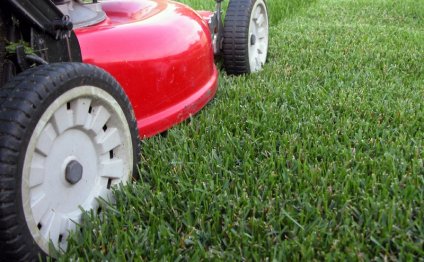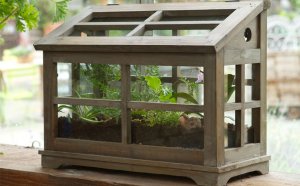
Lawn Care and maintenance
You know a healthy lawn when you see it: a smooth, lush green carpet, perfect for cartwheels and croquet. So why doesn't your lawn look like that? To get that perfect lawn you may have to change your mindset, says landscape designer Gary Alan ( "You know how in golf they say 'Be the ball'? Well, you've got to be the grass. You've got to think about what it needs, " Gary says. The basics, he says, are pretty simple: sun, water and fertilizer. Once you get those down, everyone's happy — you and your lawn. Here's how to get started.
Setting Soil
Planting a new lawn is like any good adventure: preparation and planning are key. No matter which planting method you plan to use, you need to prepare the area thoroughly to banish weeds and make sure soil won't immediately crust over or compact into lumpy ruts. John Griggs, a master gardener in West Virginia, says the most important step — and one that many gardeners skip — is testing the pH of your soil. Do-it-yourself test kids are available from nurseries and catalogs, or you can take advantage of the testing offered by your state's designated agricultural university. "It might seem like a hassle, but testing your soil will save you from pouring money into the ground, " John says.
Start by stripping the area of all weeds, including roots, even if that means taking off the top six inches. Then rototill to a depth of at least six inches to loosen compaction and improve drainage. It's extremely important to add loam and compost to enrich the soil; many experts suggest mixing equal parts of loam, sand and your original topsoil. You're best off in the long run if you incorporate a slight slope to facilitate drainage and prevent pooling. Finally, use a roller to pack down the soil, then grade the area with a metal rake. Be as thorough as you can — remember, once you've put your seed or sod down, you can't go back and regrade.
To Seed or Not to Seed
No question but rolling out a carpet of sod is the quickest way to a beautiful lawn. But sod can get expensive, especially if your lawn is going to cover a large area. The alternative is seeding the area yourself, either by hand or with a method called hydroseeding, which has recently become quite popular. Long used by farmers to sow large fields, hydroseeding solves one of the main problems of hand seeding: even dispersal of seeds. The grass seed — a mix of varieties blended for your climate and the type of use your lawn will get — is mixed into a pulp made from virgin wood fibers, fertilizer and binding agents.
Shave and a Haircut
When it comes to sharing lawn secrets, the first one on many garden experts' lips is mowing height. "Most people mow their lawns way too short, which stresses out the grass, " says Paul James, host of Gardening by the Yard. The secret, he says, is do less, not more: "I'm a great believer in benign neglect." He recommends raising the mower to the highest possible notch so you're mowing only the top third of the grass when you cut. Taller grass promotes better root development, Paul says, as well as shading the ground so it doesn't dry out as fast. An added benefit: the taller grass blocks the sun that weed seeds require to germinate. And don't believe for a moment that leaving grass taller is going to mean mowing more often, says Gary. "There's a big misunderstanding that a lot of people have that if they cut it shorter, they won't have to mow it as often, " say Gary. "But that's absolutely false; it renews itself so fast that it doesn't save you any time."
Water, Water Everywhere
"Water only once a week, but water deep" is the rule according to Paul. A weekly soaking helps roots extend deeper into the soil, while frequent shallow waterings tend to lead to thatch, that unsightly web of dry brown runners just above the soil. Watering deeply can also prevent chinch bugs, a pest that tends to attach dried, stressed out lawns across the midsection of the country. To figure out how much water your lawn needs, take your soil type into account: sandy soils dry out faster, while clay soils hold moisture longer and don't require watering as often.
For a newly seeded lawn, water every day for five to 10 minutes only. Your goal is to dampen the seeds without causing runoff that might wash them away or mar the surface with gullies. After the seeds sprout and the new grass is a half inch tall, water once a day for 15 to 20 minutes.
RELATED VIDEO



Share this Post
Related posts
Wilsonart Care and maintenance
Wilsonart ANZ – Laminate, Worktops, Panels, Surfaces, Designs
Read MoreTerrarium Care and maintenance
When it comes to gardening, sometimes often varying and harsh weather conditions can damper our hopes for a yard full of…
Read More









